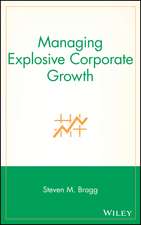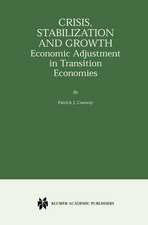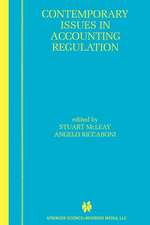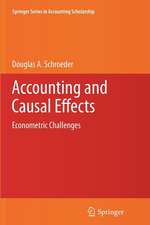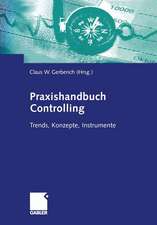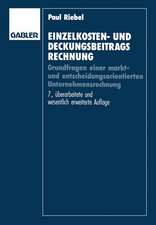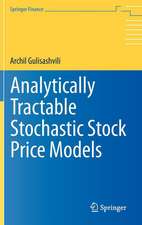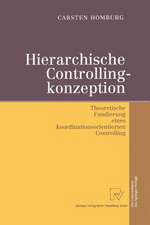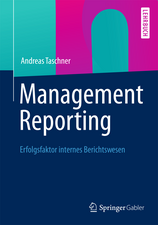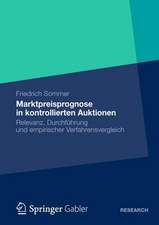Fundamentals of Islamic Finance and Banking: Wiley Finance
Autor SF Habiben Limba Engleză Paperback – 30 aug 2018
Din seria Wiley Finance
- 8%
 Preț: 516.71 lei
Preț: 516.71 lei - 8%
 Preț: 478.39 lei
Preț: 478.39 lei -
 Preț: 342.68 lei
Preț: 342.68 lei - 9%
 Preț: 582.24 lei
Preț: 582.24 lei - 8%
 Preț: 608.47 lei
Preț: 608.47 lei - 8%
 Preț: 550.72 lei
Preț: 550.72 lei - 8%
 Preț: 552.68 lei
Preț: 552.68 lei - 9%
 Preț: 623.59 lei
Preț: 623.59 lei - 8%
 Preț: 447.09 lei
Preț: 447.09 lei - 8%
 Preț: 481.63 lei
Preț: 481.63 lei - 8%
 Preț: 429.36 lei
Preț: 429.36 lei - 9%
 Preț: 824.55 lei
Preț: 824.55 lei - 8%
 Preț: 362.06 lei
Preț: 362.06 lei - 8%
 Preț: 447.44 lei
Preț: 447.44 lei - 8%
 Preț: 420.43 lei
Preț: 420.43 lei - 8%
 Preț: 366.38 lei
Preț: 366.38 lei -
 Preț: 298.48 lei
Preț: 298.48 lei - 9%
 Preț: 651.84 lei
Preț: 651.84 lei - 8%
 Preț: 566.68 lei
Preț: 566.68 lei - 8%
 Preț: 425.27 lei
Preț: 425.27 lei - 9%
 Preț: 863.97 lei
Preț: 863.97 lei - 8%
 Preț: 442.99 lei
Preț: 442.99 lei - 9%
 Preț: 696.84 lei
Preț: 696.84 lei - 8%
 Preț: 423.92 lei
Preț: 423.92 lei - 8%
 Preț: 561.23 lei
Preț: 561.23 lei - 9%
 Preț: 746.46 lei
Preț: 746.46 lei - 9%
 Preț: 645.07 lei
Preț: 645.07 lei - 19%
 Preț: 400.73 lei
Preț: 400.73 lei -
 Preț: 264.68 lei
Preț: 264.68 lei - 8%
 Preț: 357.08 lei
Preț: 357.08 lei -
 Preț: 285.83 lei
Preț: 285.83 lei - 8%
 Preț: 378.21 lei
Preț: 378.21 lei -
 Preț: 264.01 lei
Preț: 264.01 lei - 8%
 Preț: 548.96 lei
Preț: 548.96 lei - 8%
 Preț: 551.08 lei
Preț: 551.08 lei - 8%
 Preț: 533.98 lei
Preț: 533.98 lei - 8%
 Preț: 503.84 lei
Preț: 503.84 lei - 8%
 Preț: 542.56 lei
Preț: 542.56 lei - 19%
 Preț: 576.30 lei
Preț: 576.30 lei - 8%
 Preț: 388.34 lei
Preț: 388.34 lei - 8%
 Preț: 551.08 lei
Preț: 551.08 lei - 8%
 Preț: 383.66 lei
Preț: 383.66 lei -
 Preț: 310.32 lei
Preț: 310.32 lei - 8%
 Preț: 506.58 lei
Preț: 506.58 lei - 8%
 Preț: 429.76 lei
Preț: 429.76 lei - 8%
 Preț: 479.93 lei
Preț: 479.93 lei - 8%
 Preț: 561.78 lei
Preț: 561.78 lei - 9%
 Preț: 621.83 lei
Preț: 621.83 lei - 8%
 Preț: 448.91 lei
Preț: 448.91 lei - 8%
 Preț: 498.99 lei
Preț: 498.99 lei
Preț: 509.27 lei
Nou
Puncte Express: 764
Preț estimativ în valută:
90.13€ • 105.70$ • 79.03£
90.13€ • 105.70$ • 79.03£
Carte tipărită la comandă
Livrare economică 27 ianuarie-10 februarie 26
Preluare comenzi: 021 569.72.76
Specificații
ISBN-13: 9781119371007
ISBN-10: 1119371007
Pagini: 312
Dimensiuni: 170 x 244 x 17 mm
Greutate: 0.54 kg
Editura: Wiley
Seria Wiley Finance
Locul publicării:Chichester, United Kingdom
ISBN-10: 1119371007
Pagini: 312
Dimensiuni: 170 x 244 x 17 mm
Greutate: 0.54 kg
Editura: Wiley
Seria Wiley Finance
Locul publicării:Chichester, United Kingdom
Public țintă
The primary audience for this book would be colleges and universities offering the subject as a course within their finance and/or banking program or offering a major or minor in Islamic Finance and Banking, plus the instructors and students of these courses in the main IF&B region detailed above.The secondary target group would be Islamic banks and other Islamic financial institutions who may use the book and its additional resources to run introductory training for new recruits who only have a conventional finance background and none in IF&B. The institutions may also train its existing employees without any formal IF&B background.
Cuprins
List of Figures xv List of Tables xvii Acknowledgements xix About the Author xxi Preface xxiii About the Website xxv CHAPTER 1: Introduction to Islamic Finance and Islamic Economics 1 Introduction 1 Creation of Money and Conventional Finance and Banking 2 Definition of Islamic Finance and Banking 3 Distinctive Features of Islamic Finance 3 Economics and Islam 4 Economics in Ancient Times 4 Modern Economics 5 Islamic Economics 6 History of Islamic Economic Thought 6 Principles of Islamic Economics 7 Islam's Solution to the Classic Economic Problem 7 Islam and the Welfare Economy 8 Property Ownership in Islamic Economics 8 Zakat and Sadaqah 8 Ban on Interest versus Cost of Capital in Islam 9 Conventional Economics versus Islamic Economics 9 Evolution of Islamic Finance 11 Early Days 11 Birth of Modern Islamic Finance 12 Institutional Developments During the Revival of Modern Islamic Finance 12 The Mit Ghamr Experiment 13 Tabung Haji 13 Islamic Development Bank 14 Dubai Islamic Bank 14 Rapid Growth of the Islamic Finance and Banking Industry 14 Islamic Finance and Banking in Muslim Communities and Countries 15 Islamic Finance and Banking in Non-Muslim Countries 16 Sub-sectors in the Islamic Finance and Banking Industry 16 Current Status of Modern Islamic Finance and Banking 17 Timeline of Development of Contemporary Islamic Finance and Banking 18 Key Terms and Concepts 21 Chapter Summary 21 CHAPTER 2: Shariah Law and the Shariah Supervisory Board 27 Introduction to the Islamic Law - Shariah 27 Sources of Shariah 28 Schools of Islamic Jurisprudence 29 Ethics in Shariah-Compliant Business and Finance 30 Major Shariah Prohibitions and Principles and their Implications 31 Prohibition of Interest or Riba 31 Prohibition of Uncertain Dealings or Gharar 32 Prohibition of Speculative Behaviour or Maysir 33 Shariah Supervisory Board (SSB) 34 Introduction to the SSB 34 Formation of the SSB 35 Status of the SSB Within the Industry 36 Functions of the SSB 36 Corporate and Shariah Governance 38 Shariah Governance Process 38 Key Terms and Concepts 39 Chapter Summary 39 CHAPTER 3: Islamic Banking versus Conventional Banking 47 Introduction to Islamic Banking 47 Islamic Banking versus Conventional Banking 49 Similarities Between Conventional and Islamic Banks 49 Differences Between Conventional and Islamic Banking 49 Relationship with the Central Banks 50 Risks of Banks - Generic and Specific to Islamic Banks 51 Generic Risks 51 Risks Specific to Islamic Banks 52 Financial Intermediation 54 The Definition of Financial Intermediation 54 Conventional Financial Intermediation 54 Islamic Financial Intermediation 54 Islamic Financial Intermediation Models 56 Distribution of Islamic Banking Products 58 Conventional versus Islamic Financial Intermediation 58 Balance Sheet of an Islamic Bank - Sources and Uses of Funds by an Islamic Bank 59 Sources of Funds 59 Application of Funds 60 Contracts in Shariah Law 61 Contracts of Exchange in Shariah-Compliant Commerce and Finance 62 Common Islamic Banking Products 63 Retail Islamic Banking Products 63 Corporate Islamic Banking Products 64 Financial Accounting in Islamic Banking 65 Objectives of Islamic Financial Accounting 66 Features of Islamic Financial Accounting 66 Challenges Faced by Islamic Banks 67 Islamic Finance and the Financial Crisis 68 International Islamic Regulatory and Standard Setting Bodies 68 Accounting and Auditing Organization for Islamic Financial Institutions (AAOIFI) 69 Islamic Financial Services Board (IFSB) 69 Liquidity Management Centre (LMC) and International Islamic Liquidity Management (IILM) 70 International Islamic Financial Market (IIFM) 70 International Islamic Rating Agency (IIRA) 70 General Council for Islamic Banks and Financial Institutions (CIBAFI) 71 International Islamic Centre for Reconciliation and Commercial Arbitration for Islamic Finance Industry (IICRCA) 71 Islamic Development Bank (IDB) 71 International Islamic Fiqh Academy 72 Key Terms and Concepts 73 Chapter Summary 73 CHAPTER 4: Murabaha 79 Introduction to Murabaha 79 Conditions Related to Murabaha 81 Calculation of Murabaha Profit 83 The Murabaha Process 83 Practical Applications of Murabaha 85 Tawarruq, Reverse Murabaha or Commodity Murabaha 85 Challenges and Problems Associated with Murabaha 86 Comparison of Murabaha with Conventional Loans 88 Key Terms and Concepts 90 Chapter Summary 90 CHAPTER 5: Mudaraba 95 Introduction to Mudaraba 95 Use of Mudaraba for Financial Intermediation of Islamic Banks 96 Profit Calculation in Mudaraba 97 Provisions and Reserves Related to Mudaraba 98 Mudaraba as a Limited Recourse Debt Finance 99 Types of Mudaraba 99 Shariah Conditions Related to Mudaraba 100 Additional Conditions Related to Mudaraba 101 Challenges and Problems Related to Mudaraba 102 Practical Applications of Mudaraba 102 Comparison of Mudaraba with Interest-Based Conventional Banking 102 Accounting Issues Related to Mudaraba 104 Key Terms and Concepts 104 Chapter Summary 105 CHAPTER 6: Musharaka 111 Introduction to Musharaka 111 Types of Musharaka 112 Shariah Rules and General Principles Guiding Musharaka Contracts 114 Problems Related to Musharaka 115 Practical Uses of Musharaka 116 Examples of the Use of Diminishing Musharaka 118 Securitization of Musharaka 121 Comparison of Musharaka with Interest-Based Financing 121 Comparison of Musharaka with Mudaraba Financing 122 Key Terms and Concepts 123 Chapter Summary 123 CHAPTER 7: Ijara 129 Introduction to Ijara 129 Ijara in Islamic Banks 130 Types of Ijara 130 Ijara, Regular Ijara or Operating Lease 130 Ijara wa Iqtina, Ijara Muntahia Bittamleek or Financial Lease 131 Ijara Thumma al Bay 132 Shariah Rules and General Principles Guiding Ijara Contracts and their Characteristics 132 Documentation Related to the Ijara Contract 136 Main Differences Between Ijara and a Conventional Lease 136 Differences Between Ijara and a Conventional Loan Contract 138 Differences and Similarities Between Ijara Wa Iqtina and Diminishing Musharaka 139 Practical Applications of the Ijara Contract 139 Calculation of Lease Rentals 139 Practice Calculations 139 Key Terms and Concepts 140 Chapter Summary 140 CHAPTER 8: Salam 145 Introduction to Salam 145 Important Characteristics of the Salam Contract 146 History of the Salam Contract and its Shariah Acceptability 147 Benefits of the Salam Contract 148 Role of Islamic Banks in Salam and the Parallel Salam Contract 148 Salam and Parallel Salam Diagram and Process 149 Practical Application of Salam 150 A Practical Example 150 Problems Related to Salam Contracts 151 Comparison of Salam Contract with Conventional Banking 151 Key Terms and Concepts 151 Chapter Summary 152 CHAPTER 9: Istisna 155 Introduction to Istisna 155 Shariah Rules and General Principles Guiding Istisna Contracts and their Characteristics 156 Role of Islamic Banks in Istisna and Parallel Istisna 158 Description of the Process 159 Problems Related to Istisna and Parallel Istisna 160 Comparison of Istisna with Interest-Based Finance, Salam and Ijara 161 Difference Between Salam and Istisna 162 Comparison of Istisna with Ijara 163 Practical Application of Istisna 163 Key Terms and Concepts 164 Chapter Summary 164 CHAPTER 10: Takaful 169 Background of Takaful 169 Modern Takaful Industry as an Alternative to Conventional Insurance 170 Parties in Takaful 171 Shariah Rules and General Principles Guiding Takaful Contracts and their Characteristics 172 The Development of Takaful 174 During the Time of the Prophet 174 The 18th and 19th Centuries 174 20th Century 174 The 21st Century and Moving Forward 175 Challenges Faced by the Modern Takaful Industry 176 Types of Takaful 177 General Takaful 177 Family Takaful 178 Operational Structure of Takaful 180 Takaful Models 181 Pure Wakala Model 181 Pure Mudaraba Model 183 Wakala and Mudaraba Combined or Hybrid Model 185 Waqf-Wakala-Mudaraba Model 185 Comparison of the Different Takaful Models 187 Underwriting Surplus or Deficit and Technical Provisions 189 Allocation of Underwriting Surplus 189 Management of Underwriting Deficit 190 Conventional Mutual Insurance and Takaful 190 Similarities and Difference Between Takaful and Conventional Insurance 191 Similarities 191 Differences 191 Retakaful 196 Similarities Between Retakaful and Reinsurance 197 Differences Between Retakaful and Reinsurance 197 Key Terms and Concepts 198 Chapter Summary 199 CHAPTER 11: Islamic Investments and Sukuks 205 Investment Markets and Products 205 Islamic Investments 207 Money Markets - Islamic Perspective 207 Capital Markets - Islamic Perspective 208 Dealing with Non-compliant Stocks 209 Purification of Income Distribution 210 Islamic Asset and Fund Management 210 Islamic Unit Trust or Mutual Fund 211 Common Types of Islamic Investment Fund 212 Islamic Real Estate Investment Trusts 213 Similarities Between REITs and I-REITs 214 Differences Between REITs and I-REITs 215 Risks and Challenges Inherent in the Islamic Capital Markets 216 Shariah Governance and the Shariah Supervisory Board in Islamic Investment 216 Comparison of Islamic Investments with Conventional Investments 217 Introduction to Sukuks 218 Characteristics of the Islamic Investment Product - Sukuk 218 Types of Sukuks 220 Ijara Sukuk 220 Istisna Sukuk 222 Salam Sukuk 223 Murabaha Sukuk 223 Mudaraba Sukuk 224 Musharaka Sukuk 226 Controversy Related to Sukuks 227 Rating of Sukuks 229 Trading of Sukuks on the Secondary Markets 229 Comparison of Sukuks with Conventional Bonds 230 Common Advantages of Both Conventional Bonds and Sukuks 230 Differences Between Conventional Bonds and Sukuks 231 Key Terms and Concepts 235 Chapter Summary 235 CHAPTER 12: Global Standing of Islamic Finance and Banking 241 Background of Modern Islamic Finance and Banking 241 Conventional versus Islamic Finance 242 Global Growth of the Islamic Finance and Banking Industry 243 Islamic Finance and Banking and the Muslim Community 245 Banking and Islamic Banking in the Middle East and the GCC 246 Banking and Islamic Banking in South and South-East Asia and Beyond 247 Achievements and Opportunities in Global Islamic Finance and Banking 247 Challenges Faced by Islamic Finance and Banking 248 Social Responsibilities of Islamic Finance 253 Going Forward 254 Key Terms and Concepts 255 Chapter Summary 255 GLOSSARY 257 REFERENCES 271 INDEX 277
Notă biografică
SYEDA FAHMIDA HABIB, is currently an instructor at the School of Continuing Studies, York University, Toronto, Canada, specializing in finance, financial accounting and Strategic Management. Prior to this, she served as a senior lecturer at the Higher Colleges of Technology (HCT), UAE, for 19 years, specializing in various finance courses and especially involved in developing and team leading Islamic Finance and Banking. She holds an MBA, a Masters in Applied Finance and a DBA, is a member of CISI, and of the Institute of Islamic Banking and Insurance, London. She has written six books in the areas of finance, which were adopted as primary texts for HCT courses in the areas of Introduction to Finance, Financial Services Marketing in the Arab World and Personal Finance in the Arab World.



